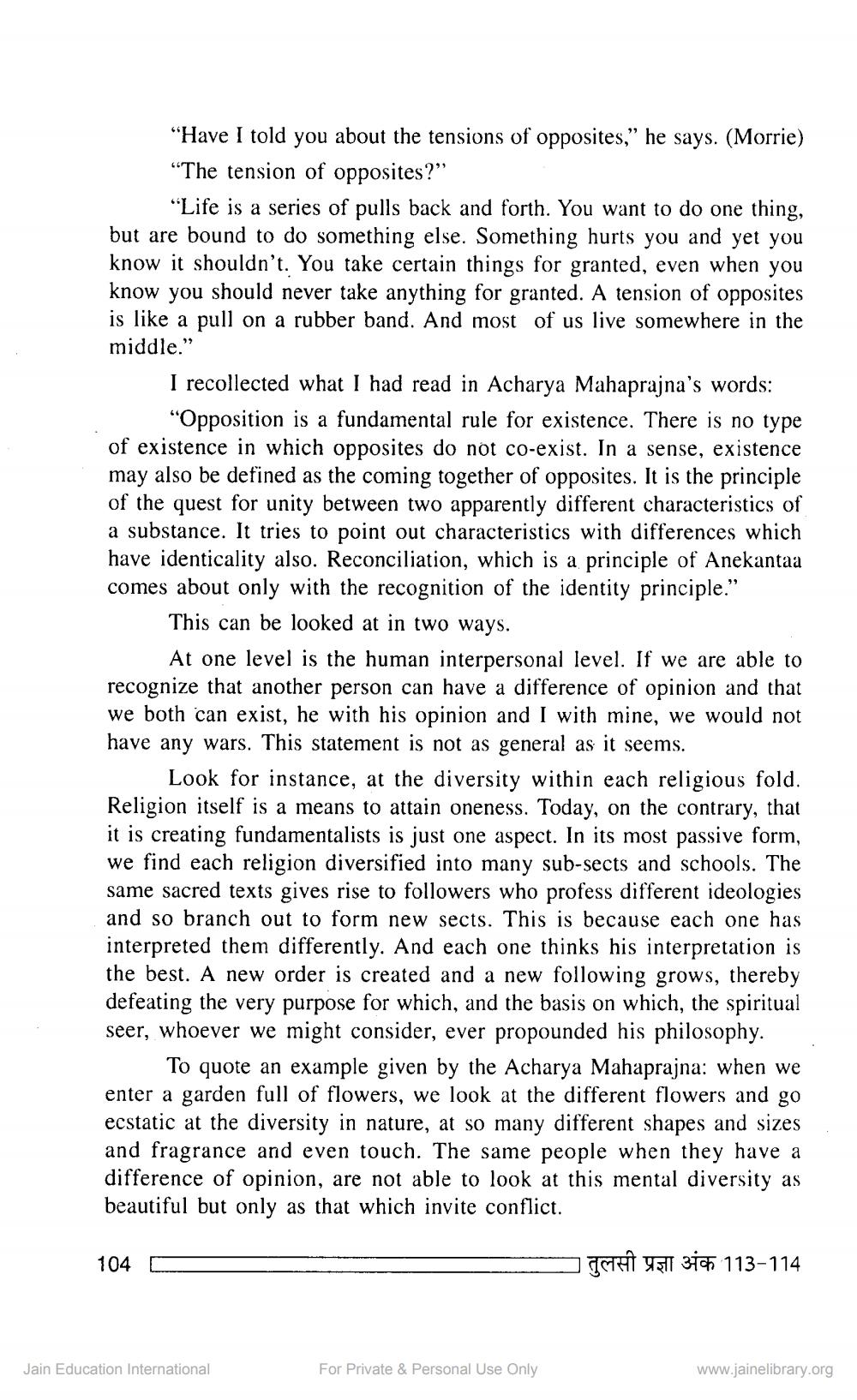________________
"Have I told you about the tensions of opposites," he says. (Morrie) “The tension of opposites?”
"Life is a series of pulls back and forth. You want to do one thing, but are bound to do something else. Something hurts you and yet you know it shouldn't. You take certain things for granted, even when you know you should never take anything for granted. A tension of opposites is like a pull on a rubber band. And most of us live somewhere in the middle."
I recollected what I had read in Acharya Mahaprajna's words:
"Opposition is a fundamental rule for existence. There is no type of existence in which opposites do not co-exist. In a sense, existence may also be defined as the coming together of opposites. It is the principle of the quest for unity between two apparently different characteristics of a substance. It tries to point out characteristics with differences which have identicality also. Reconciliation, which is a principle of Anekantaa comes about only with the recognition of the identity principle."
This can be looked at in two ways.
At one level is the human interpersonal level. If we are able to recognize that another person can have a difference of opinion and that we both can exist, he with his opinion and I with mine, we would not have any wars. This statement is not as general as it seems.
Look for instance, at the diversity within each religious fold. Religion itself is a means to attain oneness. Today, on the contrary, that it is creating fundamentalists is just one aspect. In its most passive form, we find each religion diversified into many sub-sects and schools. The same sacred texts gives rise to followers who profess different ideologies and so branch out to form new sects. This is because each one has interpreted them differently. And each one thinks his interpretation is the best. A new order is created and a new following grows, thereby defeating the very purpose for which, and the basis on which, the spiritual seer, whoever we might consider, ever propounded his philosophy.
To quote an example given by the Acharya Mahaprajna: when we enter a garden full of flowers, we look at the different flowers and go ecstatic at the diversity in nature, at so many different shapes and sizes and fragrance and even touch. The same people when they have a difference of opinion, are not able to look at this mental diversity as beautiful but only as that which invite conflict.
104
I
W511 3106 113-114
Jain Education International
For Private & Personal Use Only
www.jainelibrary.org




